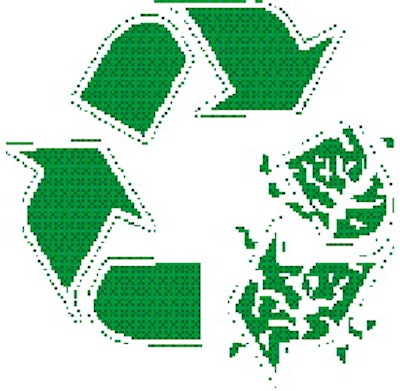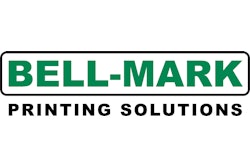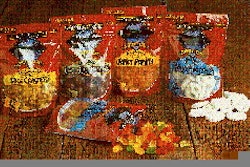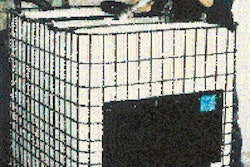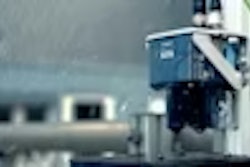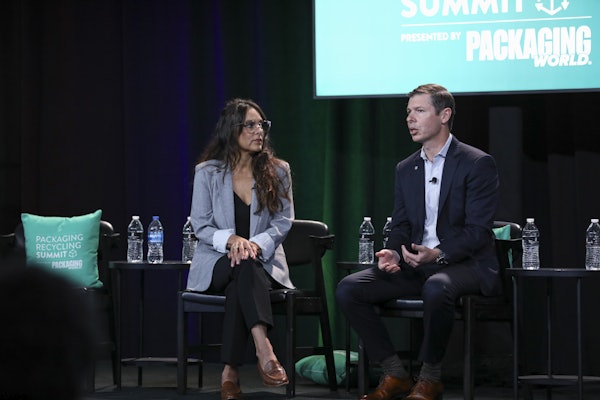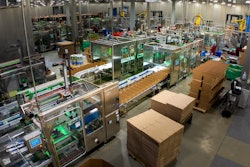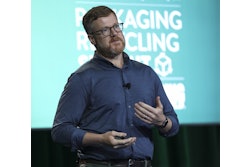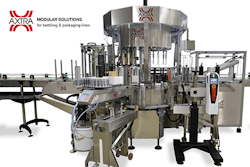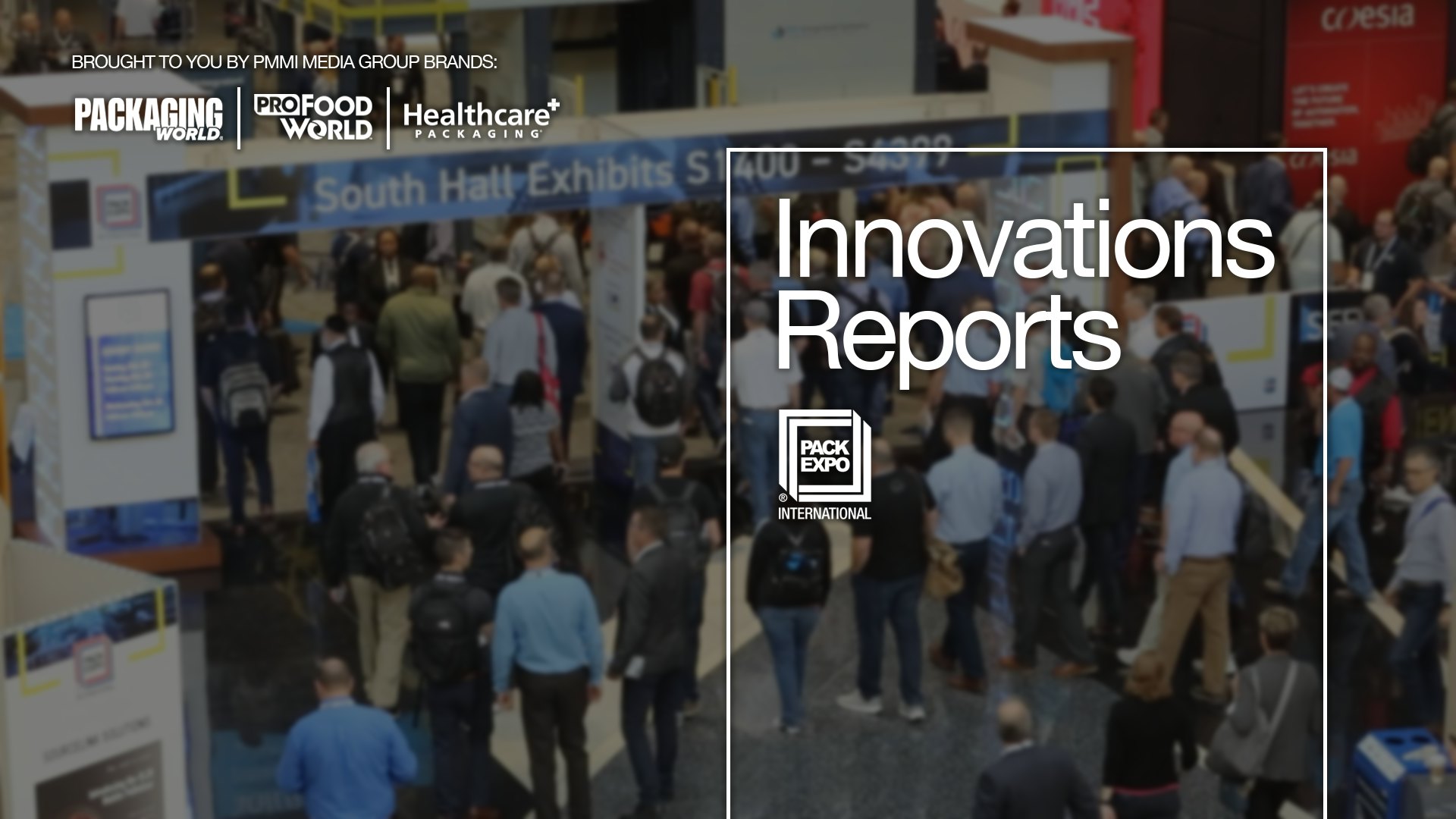Most packagers agree: It's not a particularly compelling time to be using recycled resin in plastic packaging. There is currently little legislative incentive to do so, and virgin resin, particularly polyethylene terephthalate, is just plain cheap. For high-density polyethylene, the gap between recycled and virgin resin is narrowing. Yet some manufacturers of high-visibility products have a policy to use post-consumer resin (PCR) both in good times and in bad-mitigated, of course, by cost. (For a look at who's using PCR and how much, as well as a discussion on today's economics of PCR, see part one of this report, Packaging World, June '97, p. 22.) How can users of PCR justify using a material when prices seem to rise and fall as often as the state laws requiring their use? "Our philosophy is that it has to be economically viable over the long haul," says Margaret Gerber, environmental specialist in environmental quality for Procter & Gamble. P&G is a major user of recycled HDPE (RHDPE) in its packaging, across much of its package portfolio. "When you look at it long term, there is really very little difference in the price between the PCR and virgin," says Gerber. "It really does even out." At Oakland, CA-based Clorox, another prominent user of recycled resin, there is a similar long-term outlook. "I think we should expect these kinds of cycles," says Terry Bedell, who handles environmental issues for Clorox. "These are commodities, and they're going to have their ups and downs. What we try to do is have everyone in the supply chain take a long-term view of it." DowBrands, Indianapolis, IN, which has consistently used RHDPE since 1993, sees no reason to change, if only from an operations standpoint. Tim Millar, packaging director, notes that all of the company's blow-molding operations have been converted over to accommodate RHDPE. (DowBrands manufactures most of its bottles itself.) It simply doesn't make economic sense to convert back and forth as the political winds shift. "We've worked real hard to be able to run PCR," says Millar. "We've stuck with it and I would say we will continue the commitment." Another benefit, according to Millar: In the event of future legislation, the logistical cat-and-mouse games of shifting inventory around to meet state mandates are unnecessary. "We're not concerned about inventories," he explains. "We've already got [recycled-content containers] completely flushed through the system." Label claims: do consumers care? Though these and other companies continue to use PCR, not everyone declares it on the label. The consensus among packagers PW spoke with seems to be that consumers just don't seem to respond to recycled-content claims on packaging. "We've had it on the label at times, and not at other times," says Clorox's Bedell. "We've found that it doesn't make any difference to most of the people who are buying it." P&G lists recycled content "for most [packages] where we get a lot of calls on our 800 number," says P&G's Gerber. Veryfine, the Westford, MA, juice and juice drink maker that incorporates recycled PET (RPET) in most of its plastic packaging, has seven environmental messages that it rotates on its packaging, according to Bill Lindsey, Veryfine's environmental affairs manager. Yet only one of those messages makes a recycled-content claim. "We just didn't want to get redundant with our messages," says Lindsey, explaining why the content claim isn't used all of the time on all of Veryfine's packaging. DowBrands lists its PCR content on all its packaging, despite an acknowledged drop in interest. Environment-related calls to its 800 number have plummeted in recent years, says Tim Millar. A quick spot check he performed for PW revealed that only 1% of phone calls logged for a specific brand were environment-related. For many packagers, the benefit of not making a label claim-to provide the flexibility to move in and out of PCR without publicly committing to it-outweighs calling it to the consumer's attention. Gerry Claes, general manager of Graham Recycling, a unit of blow-molder Graham Cos. (York, PA), confirms that the majority of his customers that incorporate PCR don't declare it on the label. In Pittsburgh, Heinz USA does not currently declare any recycled content on the label, even though 90% of its ketchup bottles in the U.S. now contain 35% post-consumer RPET. "We meet all the environmental requirements and don't believe it necessary to change our label at this time," says Alan Skeddle, general manager of packaging technologies. Consumer complacency The two largest soft drink companies in the U.S.-neither of which currently uses PCR in their bottles in the U.S.-report mixed results in terms of consumers' interest in the environment. "We get a fair number of [environment-related] calls that come in," says Carol Martel, spokesperson for the Coca-Cola Co., Atlanta. "They're mostly callers wanting to know where they can recycle." Coke helps such callers by identifying recycling centers in their communities. In contrast, Pepsi-Cola Co. says the number of environment-related calls to its 800 number is "minimal." So too is interest in closing the loop. "We really haven't seen consumer interest of late in any recycled-content package," says Sal Porrazzo, a 40-year Pepsi veteran currently consulting in the environmental area for the Somers, NY, soft drink company. Ironically, the rise of recycling itself may in part be responsible for the waning of environmental pressure on packagers to close the loop. "Recycling finally took hold, people have their little blue recycling bin, and are thinking, 'Now we're recycling, so that's all we need to worry about,'" says Pat Franklin, executive director of the Container Recycling Institute, an environmental advocacy group that compiles data on rigid container recycling. At Clorox, Terry Bedell is cautious, however, about banking on the apparent lack of consumer interest in PCR: "I wouldn't get too cavalier about it because I think consumers assume there is recycled material in the bottle," he says. George Dreckmann agrees. He's the recycling coordinator for the City of Madison, WI, and vocal critic of packagers that don't use PCR, most notably the soft drink industry. "Most consumers that I talk to assume that because they're recycling soda bottles, there's recycled content in those bottles. And they're shocked [to find out] that that's not the case." Further, he argues, pressure on recycling programs to be more efficient could force programs like his to stop picking up plastic, especially if the local economics don't favor plastics collection. "If plastics weren't being picked up at curbside, I think [the issue] would jump back onto [consumers'] list of priorities pretty quickly," says Dreckmann. Gerber at P&G also concurs: "People are just expecting companies to [use PCR] now, which is maybe why the legislation has been backing off. I think if we were to back off [using PCR] now, [legislation] would just come right back." Future mandates? For now, at least, state mandates and bottle bills are at a low ebb in the U.S. Further, producer responsibility laws, while still strong in Europe and on the rise in developed countries in Asia, aren't coming to the U.S. any time soon, says Michele Raymond, publisher of State Recycling Laws Update. The heat's off packagers "for the time being," she says, "but the underlying problems haven't been solved. Industry is saying 'don't worry, we're going to do this voluntarily.' But their actions are simply not quite showing that." Are packagers worried? Motts Inc., Stamford, CT, which uses PET (mostly virgin) for 60% of its beverage packaging, is watching the issue closely. "Certainly we are concerned about state and national bottle bills and are following them to determine where they're going," says Catherine Van Evans, a spokesperson for Motts. In fact, the company is currently evaluating a potential switch to RPET. "We are looking at it in the multilayer format for a couple of our products," she says, "to make sure we are ready for whatever might take place [on the legislative front] in the future." At P&G, "We're not backing off," says Margaret Gerber. "The concern for us comes in how [potential future] legislation is actually worded." Victor Bell is doubtful about any immediate legislative threat, but he cautions packagers to remain vigilant. Bell is a consultant with Science Applications Intl. Corp.'s (SAIC) environmental packaging team (Newport, RI), which advises companies on compliance with packaging legislation. "There are some packaging bills out there but I don't see them hot on the horizon," says Bell. Nevertheless, he says, "I think the pendulum is going to swing back. A lot of our clients are looking at their inventories and are experimenting with how they can definitely put PCR back in." More evidence: "There are very aggressive grassroots campaigns to expand existing bottle bills in Massachusetts and Oregon to include the new juice drinks, teas and bottled waters," says the Container Recycling Institute's Pat Franklin. "None of these were included in the original bills because they're not carbonated. And in Michigan there is definitely talk of expanding that state's bottle bill." Even Wisconsin's law, which currently mandates plastic containers to have 10% recycled content, including plant scrap, could change. George Dreckmann confirms that he's part of an effort to strengthen Wisconsin's law. "We are introducing a bill that would increase the percentage from 10% to 20% PCR content and toughen up the requirements by eliminating the loophole [of counting scrap]. It will also ban the sale of products sold in non-recyclable containers"-but only if similar products are sold in containers that are recyclable. "That means all the polypropylene cottage cheese containers are in trouble," he says. The bill would also ratchet up the mandated PCR content to 40% by 2003. Says SAIC's Bell: "We're advising a lot of our clients to add 10% post-consumer if you can, just in case the Wisconsin law gets changed." There is also some evidence that environmentalists are returning to the PCR issue. Now that curbside recycling programs exist in many communities in the U.S., says CRI's Franklin, "people who work at environmental organizations realize we need to get back on this whole issue of using recycled content and having a closed-loop process." Targeting soft drinks On a more visible level, a coalition of recyclers and environmentalists called the Grassroots Recycling Network, with a presence in Washington, DC, and Sacramento, CA, is turning up the heat on the PCR issue, choosing Coke as a target. In March, the group sent a letter to Coca-Cola CEO Roberto Goizueta urging Coke to: restore its use of RPET in the U.S., disclose PCR content on package labels, return to a refillable system, and reinstate deposits on all its containers. It also staged a rally against Coke in Atlanta in April, and a spokesman for the group claims that Earth Day events in "a couple dozen cities" this past April focused on the Coke issue. The group says Coke has not responded, and Coke wouldn't comment on the issue to PW. George Dreckmann sees the issue of closing the loop as critical to the survival of recycling programs, and lays at least part of the blame at the feet of the soft drink industry. "When you have companies like P&G who are going to close the loop, then we're okay. That hasn't been the case with the soft drink manufacturers. They did it for a little while and then when it's off the radar screen they quit." "We certainly have not walked away," counters Coke's Carol Martel. "We've taken a different tack that people may or may not agree with. We've continued to put our money and resources behind the development of new technologies. In the supplier community-ask them-we've made it quite clear that we want to be approached with the newest advances and technologies that will allow us to continue to bring costs down, bring them more in parity with virgin materials so that they're economically sustainable over time." Pepsi's Sal Porrazzo also disputes the notion that closing the loop is critical to the health of recycling programs: "Right now, of the approximately 650 million pounds of PET collected through curbsides and other recycling programs, [the remainder that's not used in packaging] is pretty much spoken for by other secondary products. It's being used. The markets are still there." Unfair comparisons? Coke's Martel also points out that a comparison of soft drink bottlers to the likes of P&G, Clorox and DowBrands simply isn't valid, for several reasons. These latter companies admit they do not have to pay a premium for their recycled resin, which is mostly RHDPE, all of it non-food-grade. Soft drink companies, on the other hand, would be required to purchase food-grade recycled-content packaging, whether it's resin or finished bottles that incorporate PCR. There are only a handful of suppliers with a letter of nonobjection from FDA to sell such materials, and both Coke and Pepsi say to date, these materials have carried a premium. (For a discussion of virgin versus recycled resin prices, see last month's story.) The American Plastics Council, which represents manufacturers of plastic resin, further argues that prices and usage of PCR should continue to be determined solely by market forces. "A year ago when [virgin resin] prices were high, no one was calling for government mandates [to encourage the use of PCR]," says APC's Susan Kissler, manager for media & government communications. It remains to be seen whether environmental activists will once again seize the issue as vigorously as they did in the late '80s and early '90s. It's also unclear whether the close-the-loop sentiment espoused by the Grassroots Recycling Network and others represents a genuine resurgence of environmental fervor or merely the sour chantings of disgruntled recyclers and activists. If activists succeed in generating consumer sympathy, packagers may have to restart the publicity machinery of the likes of the Council on Packaging in the Environment (COPE), which shut down last December, its mission presumably accomplished. One thing is clear: Though PCR may be out of favor, it's not going to be out of sight any time soon.
